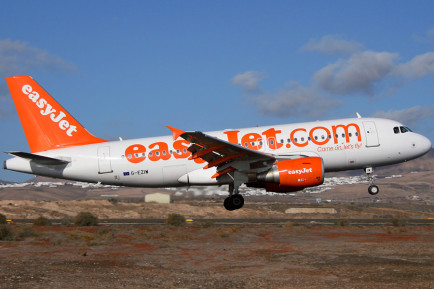
Cheap air travel has not only liberated many corners of Europe, it is also great for Spain’s tourism and property industries.
The number of flights taking off and landing at Spain’s airports this year that are classed as low-cost has soared by 13.7% in 2017 compared to 2016, data from the Ministry of Tourism has shown.
This means that for the first 11 months of the year some 43 million passengers arrived or left Spain on low-cost flights. This massive growth can be attributed to the strength of Spain’s soaring tourism industry, and a steady surge in the number of British holidaymakers snapping up bargain flights for a week or two soaking up the Spanish sun…Furthermore, this year was the first year ever in which low-cost flights overtook conventional air travel in Spain. Of the 82.1 million passengers recorded at Spanish airports in the first 11 months of 2017, 52.3% were either arriving or departing on low-cost flights.
So just what is a low-cost flight? It is essentially a flight that has no-frills, is cheaper than similar flights at similar times, and is usually offered by a handful of budget carriers such as Ryanair, easyJet and Vueling.
The Tourism Ministry’s data showed that 80% of all low-cost passengers were travelling to or from other EU countries, with the three aforementioned airlines accounting for 34.7% of all European flights.
British passengers are far and away the most represented group on these flights, accounting for a massive 36.5% of all low-cost passengers – an increase of 13% on last year. In actual terms, that equates to 15.7 million British passports scanned at Spanish airports’ border controls so far this year.
German passengers are the next largest group, accounting for 11.7% of all low-cost arrivals (although their number grew more steeply than Brits this year, rising 19.7% on 2016), followed by Italians (11.4%), the French (8.1%) and flying Dutchmen (and women) at 6.4%.
For the conventional sector, ie, flights not considered low-cost, there was a rise of 3.4% in passenger numbers, which reached 39.1 million. If this group, Germans represented the more prominent nationality, accounting for 8.4 million passengers.
 en
en



 Vlaams-Nederlands
Vlaams-Nederlands
0 Comments
Leave a Comment
DISCLAIMER
The opinions and comments expressed by contributors to this Blog are theirs alone and do not necessarily reflect the views of VIVA Homes Under the Sun Ltd, any of its associated companies, or employees; nor is VIVA to be held responsible or accountable for the accuracy of any of the information supplied.
Have you got something to say?